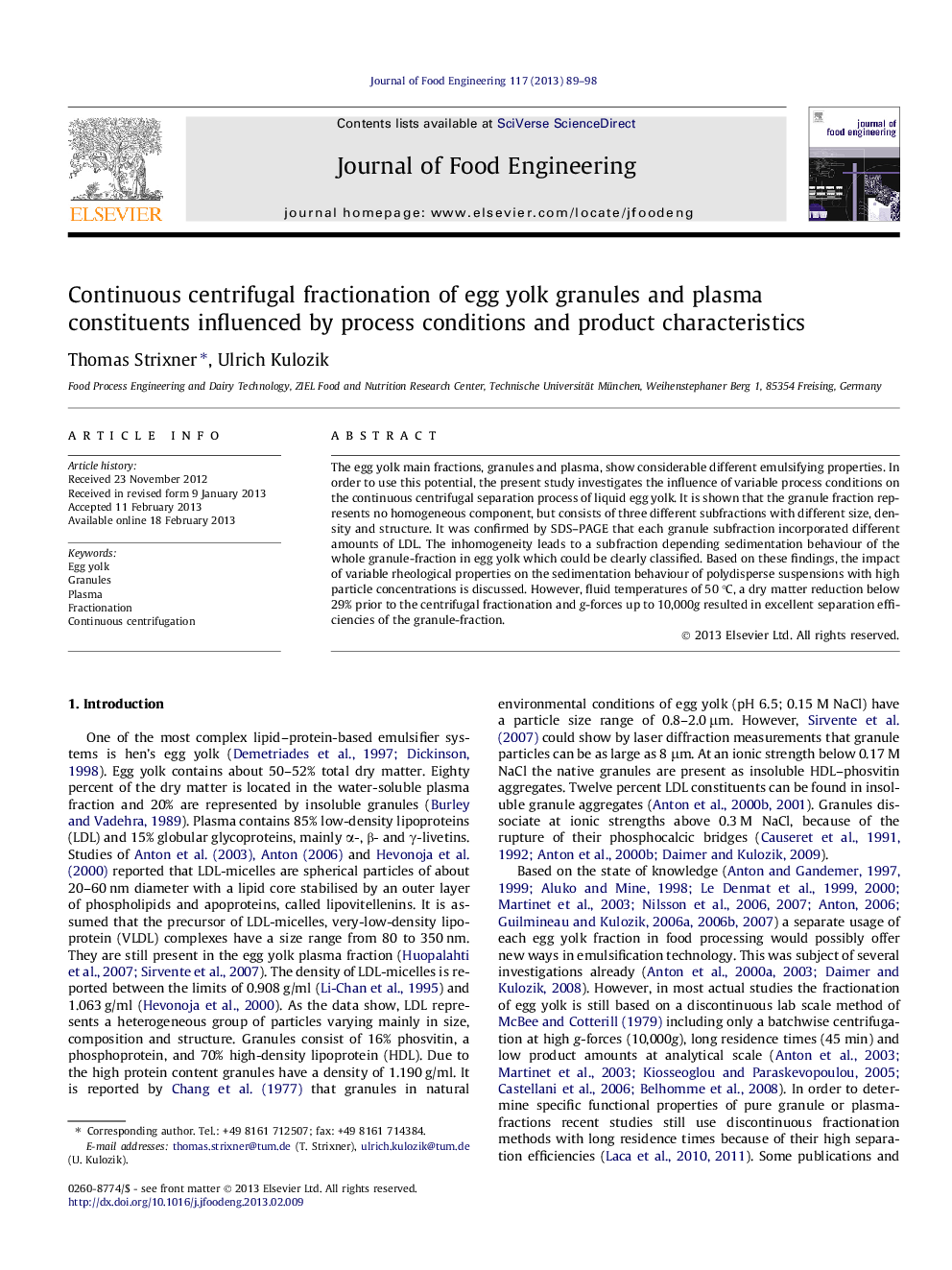| Article ID | Journal | Published Year | Pages | File Type |
|---|---|---|---|---|
| 223536 | Journal of Food Engineering | 2013 | 10 Pages |
The egg yolk main fractions, granules and plasma, show considerable different emulsifying properties. In order to use this potential, the present study investigates the influence of variable process conditions on the continuous centrifugal separation process of liquid egg yolk. It is shown that the granule fraction represents no homogeneous component, but consists of three different subfractions with different size, density and structure. It was confirmed by SDS–PAGE that each granule subfraction incorporated different amounts of LDL. The inhomogeneity leads to a subfraction depending sedimentation behaviour of the whole granule-fraction in egg yolk which could be clearly classified. Based on these findings, the impact of variable rheological properties on the sedimentation behaviour of polydisperse suspensions with high particle concentrations is discussed. However, fluid temperatures of 50 °C, a dry matter reduction below 29% prior to the centrifugal fractionation and g-forces up to 10,000g resulted in excellent separation efficiencies of the granule-fraction.
► Inhomogeneous sedimentation profile of the whole granule fraction in egg yolk. ► Granules consists of three subfractions with different size, density and structure. ► Above critical DM the polydisperse granule-collective lead to a sedimentation stop. ► High temperatures and DM reduction results in excellent separation efficiencies.
